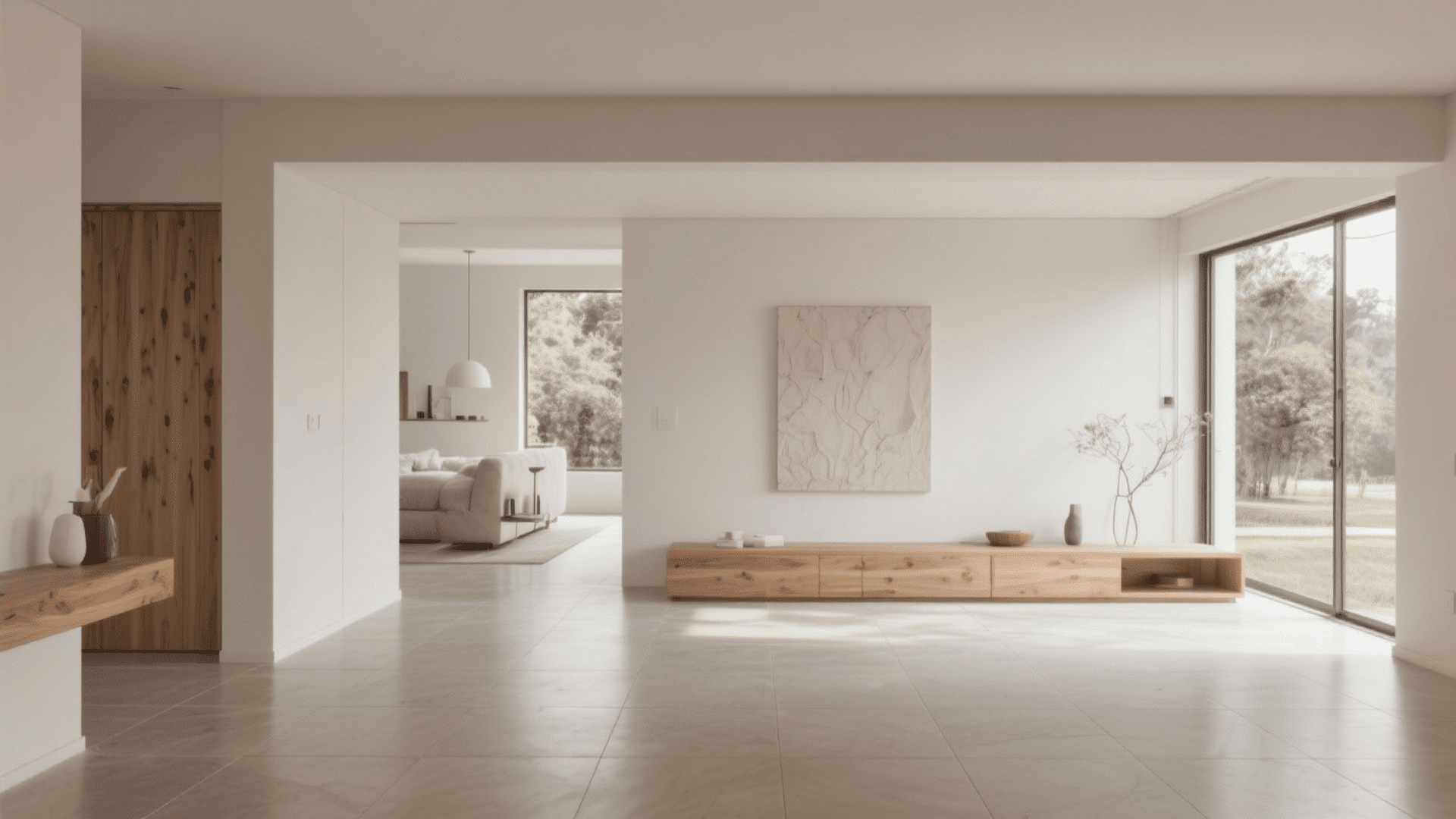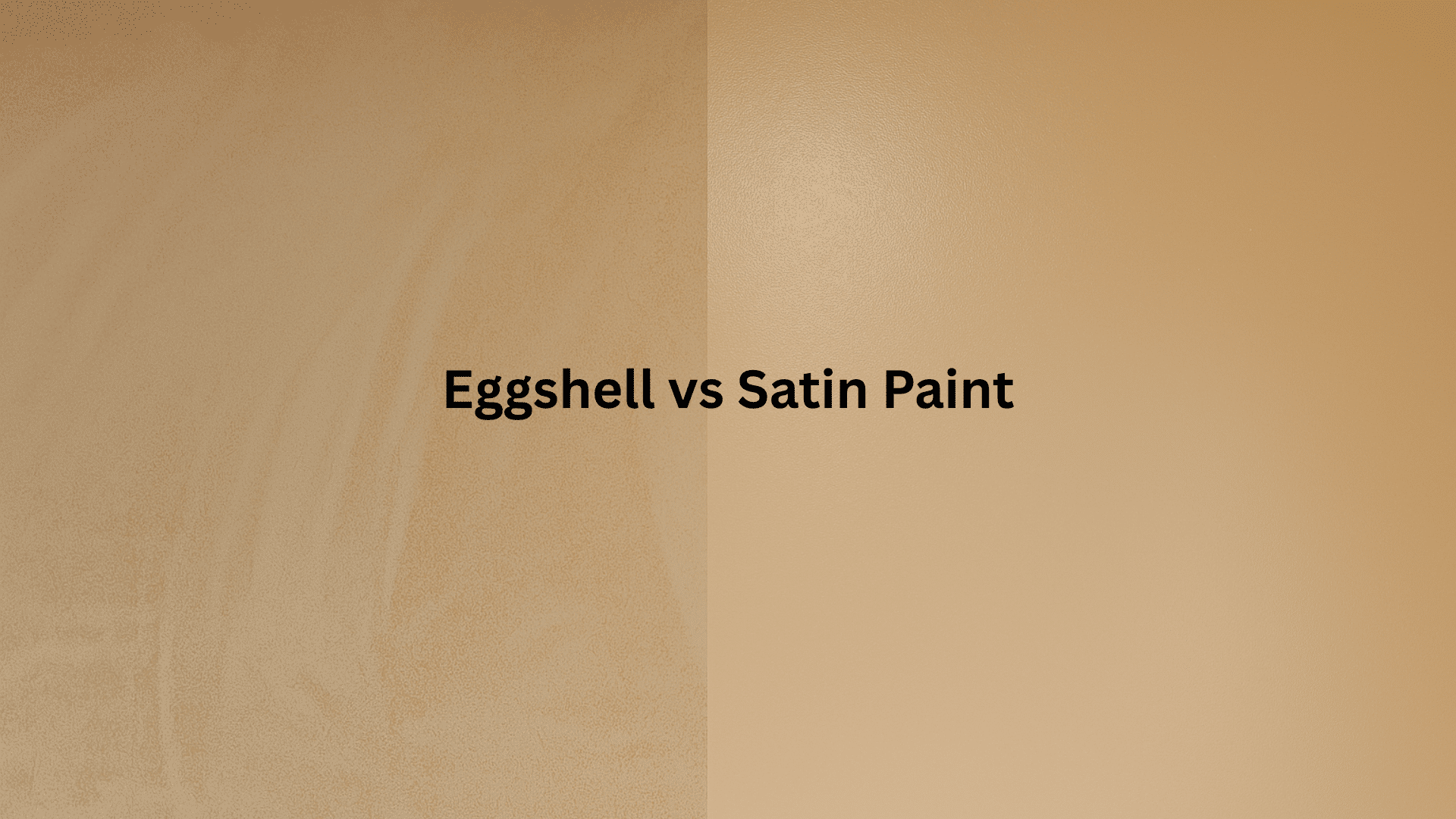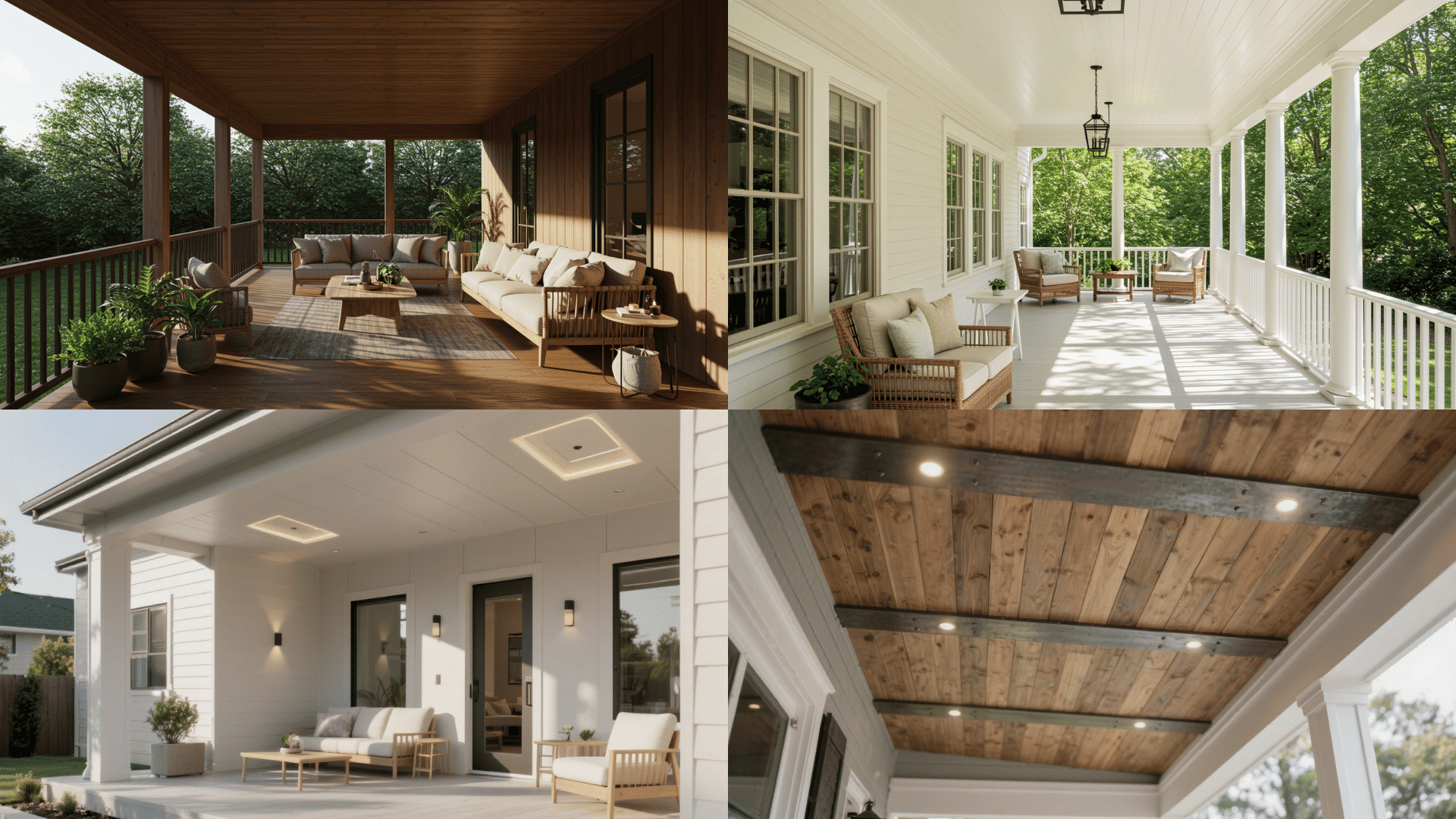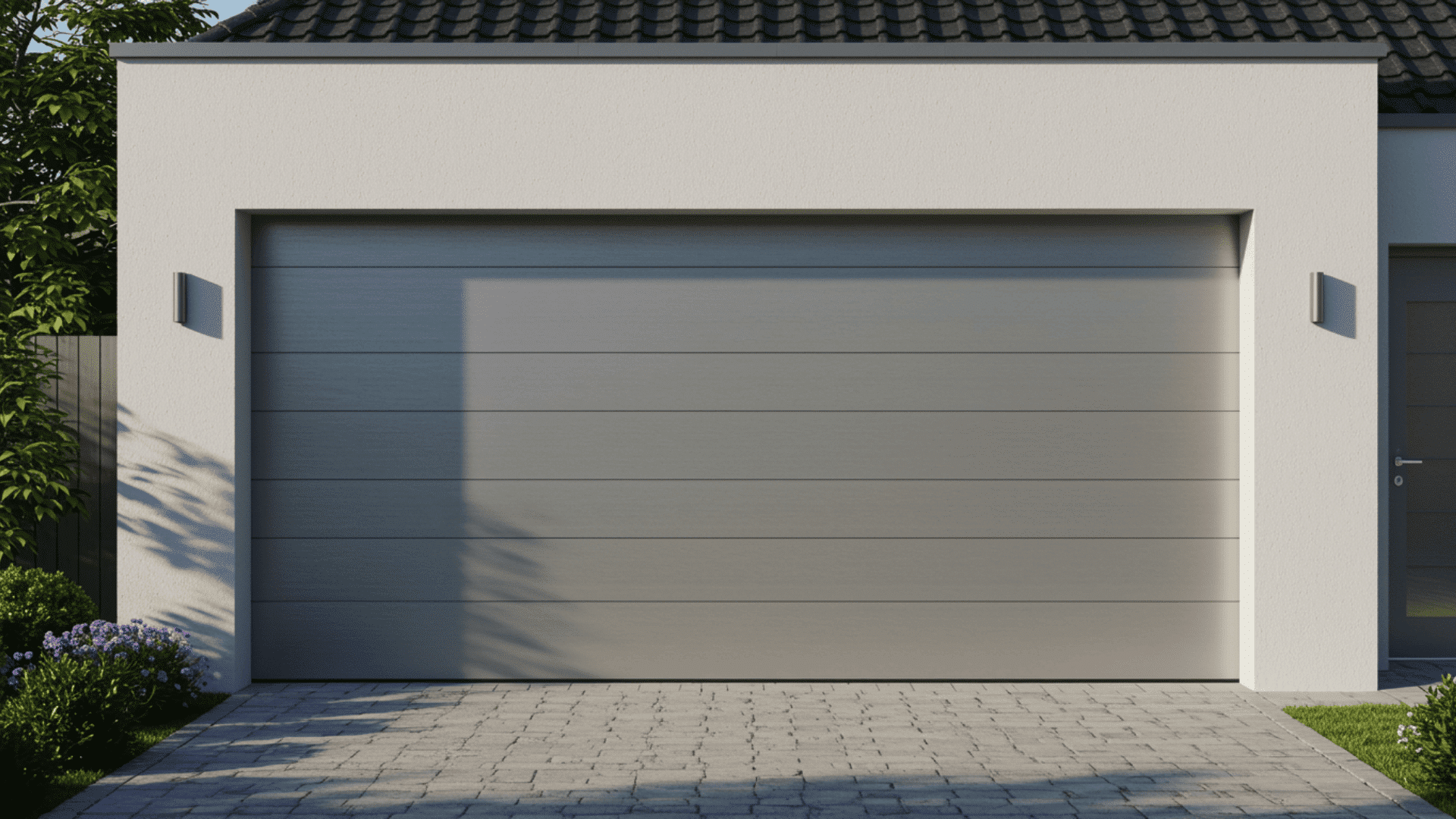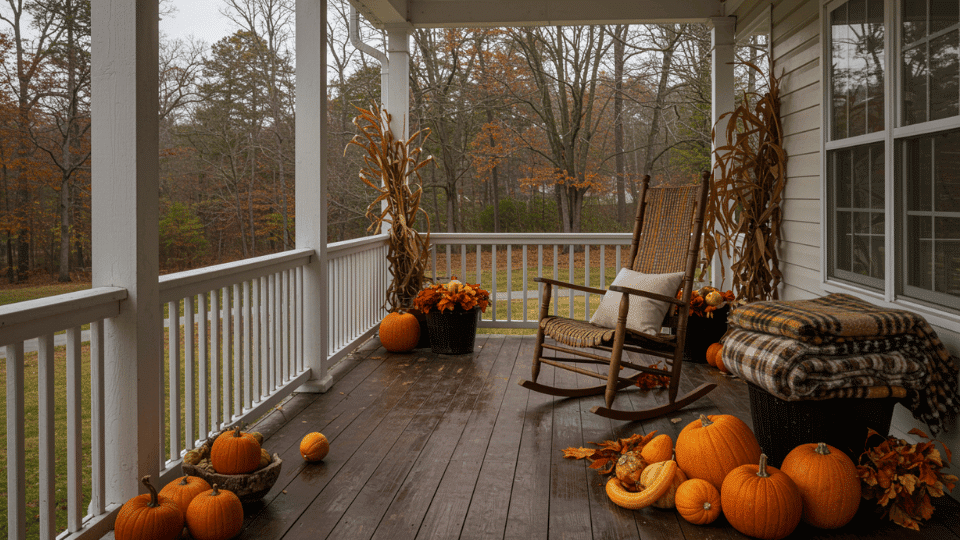I think picking the right floor is more important than it seems. When you walk into a room, the floor is the first thing you feel. Hardwood looks classic, tile lasts forever, and carpet feels cozy. Vinyl tries to copy them all.
Some floors get better with time. Others wear out fast. The tricky part is picking what works best for your space.
Each flooring type offers something different, and over time, I’ve found they all have their own unique surprises once you actually live with them.
Why Your Flooring Choice Shapes Your Entire Home?
Your floors cover more space than any other surface in your home. They set the tone for every room and affect how your space looks and feels.
There are many types of flooring, and choosing the right one makes daily life easier. It impacts everything from cleaning routines to comfort levels. Poor flooring choices can lead to costly repairs and ongoing maintenance headaches.
Flooring also affects your home’s value. Quality floors attract buyers and increase resale prices. They’re a long-term investment that influences your lifestyle for years to come.
Different Types of Flooring
Let’s cut through the noise and look at what’s actually out there. Each flooring type brings something different to the table, whether it’s durability, style, or budget-friendliness.
1. Hardwood Flooring

Nothing beats the warm, natural look of real wood. Hardwood adds value to your home and can last decades with proper care. It’s a classic choice that works in almost any room, though moisture is its enemy.
- Price Range: $6–$20 per square foot
- Recommended For: Living rooms, bedrooms, dining areas
- Pros: Timeless appeal, increases home value, can be refinished
- Cons: Scratches easily, not moisture-resistant, requires maintenance
2. Laminate Flooring
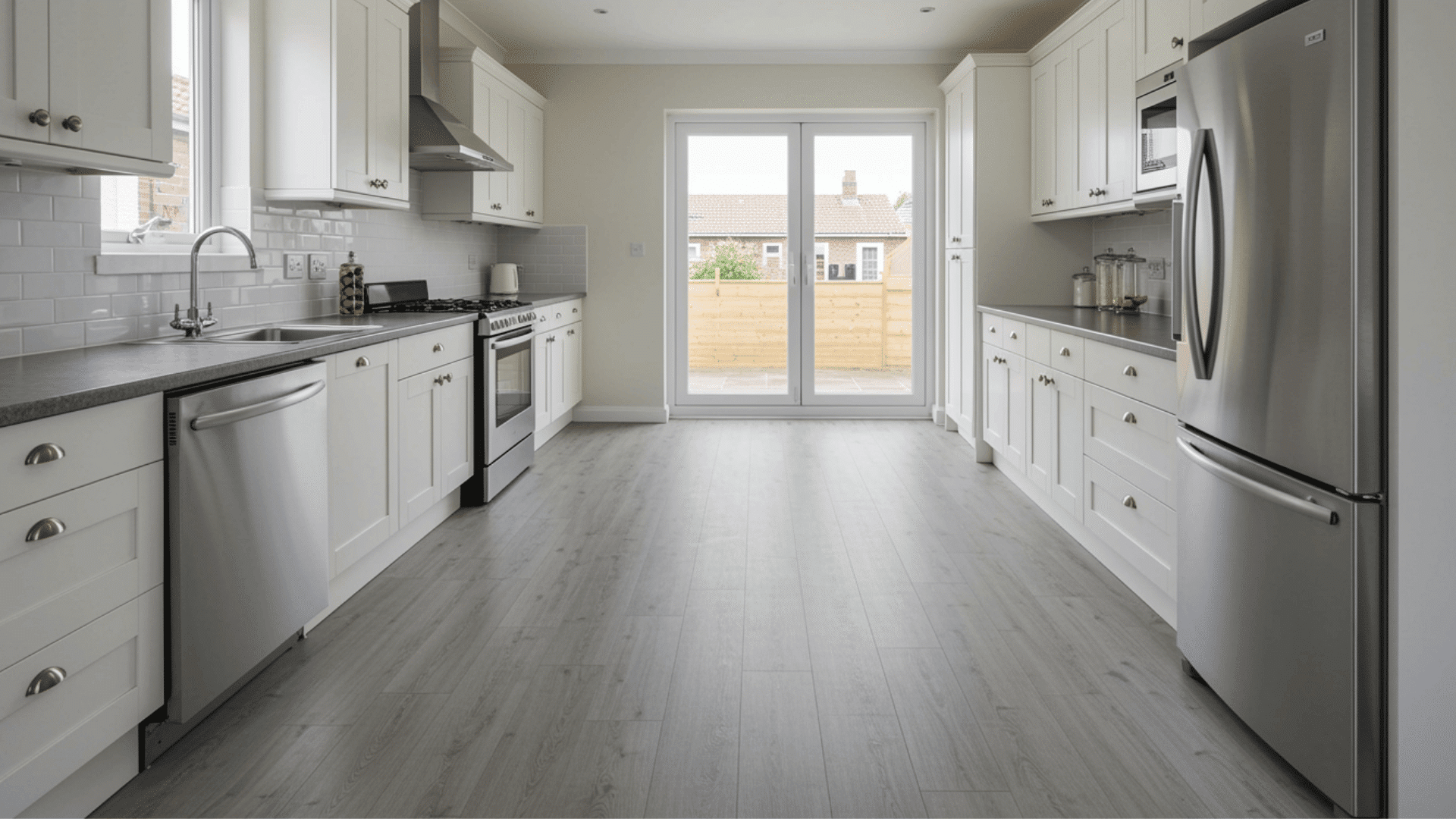
Laminate mimics the look of wood or stone but costs way less. It’s made of compressed layers with a protective coating on top. This option handles foot traffic well and works great if you’re on a tighter budget.
- Price Range: $2–$8 per square foot
- Recommended For: High-traffic areas, kitchens, basements
- Pros: Affordable, scratch-resistant, easy installation
- Cons: Can’t be refinished, water damage is permanent, feels synthetic
3. Vinyl Flooring

Vinyl has come a long way from those outdated kitchen floors. Modern vinyl planks and tiles look surprisingly realistic and resist water well. It’s soft underfoot and simple to maintain, making it super practical.
- Price Range: $2–$7 per square foot
- Recommended For: Bathrooms, kitchens, laundry rooms, basements
- Pros: 100% waterproof, comfortable, budget-friendly, low maintenance
- Cons: Can dent under heavy furniture, less resale value than hardwood
4. Tile Flooring

Tile flooring, whether ceramic or porcelain, offers serious durability and water resistance that handles moisture and heavy use, while staying cool underfoot in warmer climates.
- Price Range: $5–$15 per square foot
- Recommended For: Bathrooms, kitchens, entryways, outdoor spaces
- Pros: Waterproof, incredibly durable, heat-resistant, easy to clean
- Cons: Cold and hard underfoot, grout needs regular maintenance, and installation costs more
5. Carpet Flooring

Carpet makes rooms feel cozy and warm instantly. It’s soft, quiet, and comes in endless colors and textures. While it’s perfect for bedrooms, it’s not ideal anywhere moisture or heavy spills are common.
- Price Range: $3–$12 per square foot
- Recommended For: Bedrooms, living rooms, stairs, home offices
- Pros: Comfortable, sound-absorbing, affordable, adds warmth
- Cons: Stains easily, traps allergens, wears out faster than hard surfaces
6. Stone Flooring

Stone flooring like marble, granite, or slate screams luxury. Each piece is unique, and the natural patterns add serious character to any space. It’s heavy-duty and lasts forever, but installation and upkeep require some effort.
- Price Range: $10–$50 per square foot
- Recommended For: Entryways, kitchens, bathrooms, high-end spaces
- Pros: Unique natural beauty, extremely durable, adds resale value
- Cons: Expensive, cold underfoot, requires sealing and maintenance
7. Bamboo Flooring
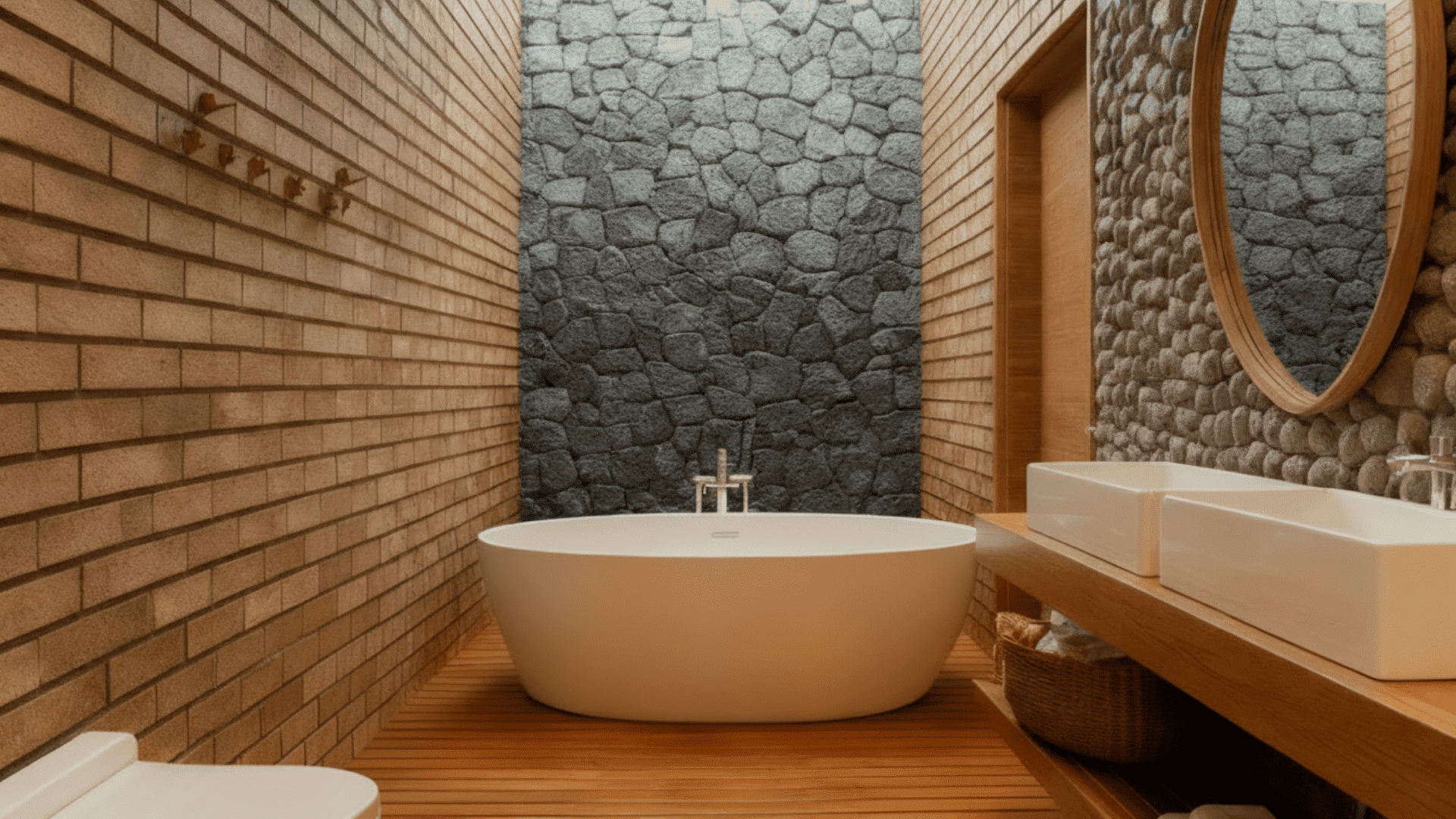
Bamboo offers an eco-friendly alternative to traditional hardwood. It grows fast, making it a sustainable choice that still delivers that natural wood vibe. It’s surprisingly tough and handles everyday wear pretty well.
- Price Range: $5–$10 per square foot
- Recommended For: Living rooms, bedrooms, offices
- Pros: Sustainable, durable, water-resistant (better than hardwood), stylish
- Cons: Can scratch, quality varies by brand, fades in direct sunlight
8. Cork Flooring

Cork flooring is soft, warm, and naturally antimicrobial, made from regrowing tree bark for an eco-friendly choice, with a cushioned feel that’s ideal for spaces where you stand a lot.
- Price Range: $4–$8 per square foot
- Recommended For: Kitchens, bathrooms, playrooms, home gyms
- Pros: Comfortable, sustainable, naturally resistant to mold and mildew
- Cons: Needs sealing, can dent easily, fades with sun exposure
9. Engineered WoodFlooring

Engineered wood looks just like solid hardwood but handles moisture and temperature changes better. It’s made of real wood on top with plywood layers underneath for stability.
- Price Range: $4–$12 per square foot
- Recommended For: Kitchens, basements, rooms over concrete slabs
- Pros: More stable than solid hardwood, can be refinished (some types), moisture-resistant
- Cons: Limited refinishing options, still vulnerable to water, quality varies by thickness
10. Linoleum Flooring
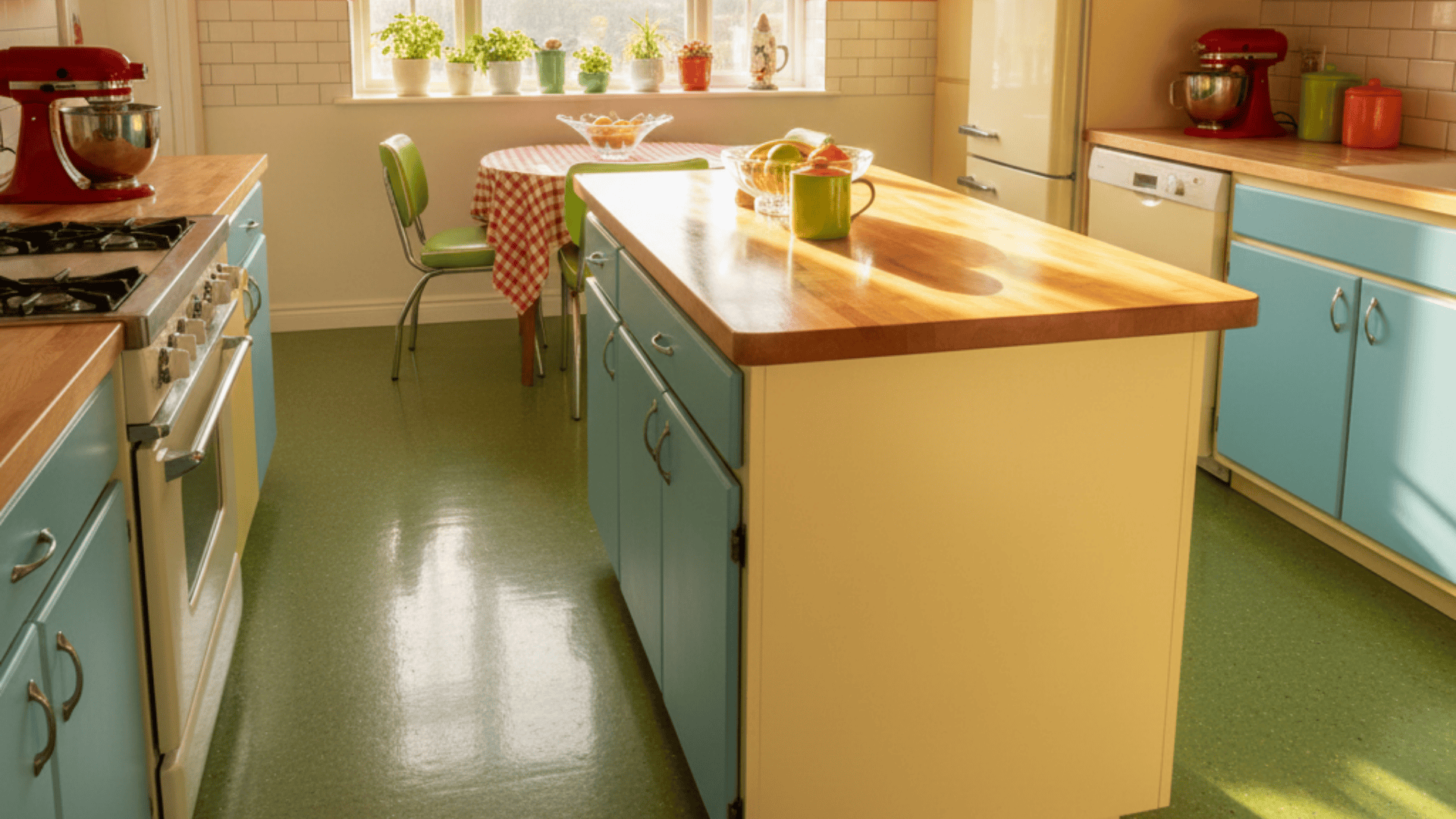
Linoleum differs from vinyl as it’s made from natural materials like linseed oil and cork dust, and while it’s been around forever, modern versions look much better and offer biodegradable durability.
- Price Range: $3–$8 per square foot
- Recommended For: Kitchens, bathrooms, mudrooms, eco-friendly homes
- Pros: Eco-friendly, antimicrobial, durable, comes in many colors and patterns
- Cons: Needs periodic sealing, can be slippery when wet, and installation requires professionals
11. Concrete/Polished Concrete Flooring
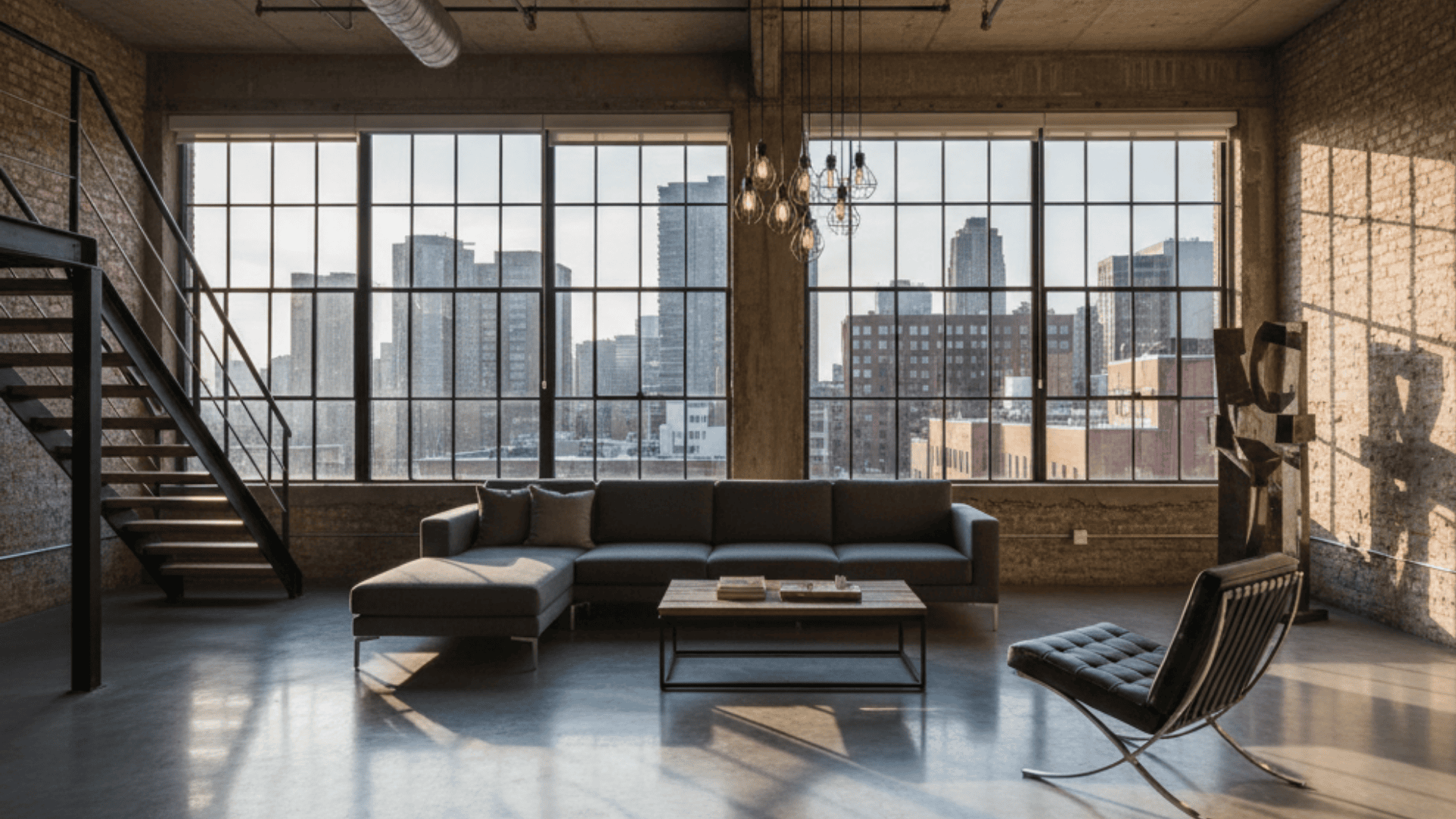
Concrete isn’t just for garages anymore. Polished concrete gives you that sleek, industrial look while being incredibly durable. It can be stained, stamped, or left natural depending on your style.
- Price Range: $3–$12 per square foot (polished); $2–$6 (basic concrete)
- Recommended For: Modern homes, basements, kitchens, commercial spaces, open-concept areas
- Pros: Extremely durable, low maintenance, mutiple design options, works with radiant heating
- Cons: Very hard and cold underfoot, can crack over time, requires sealing
12. Marble Flooring
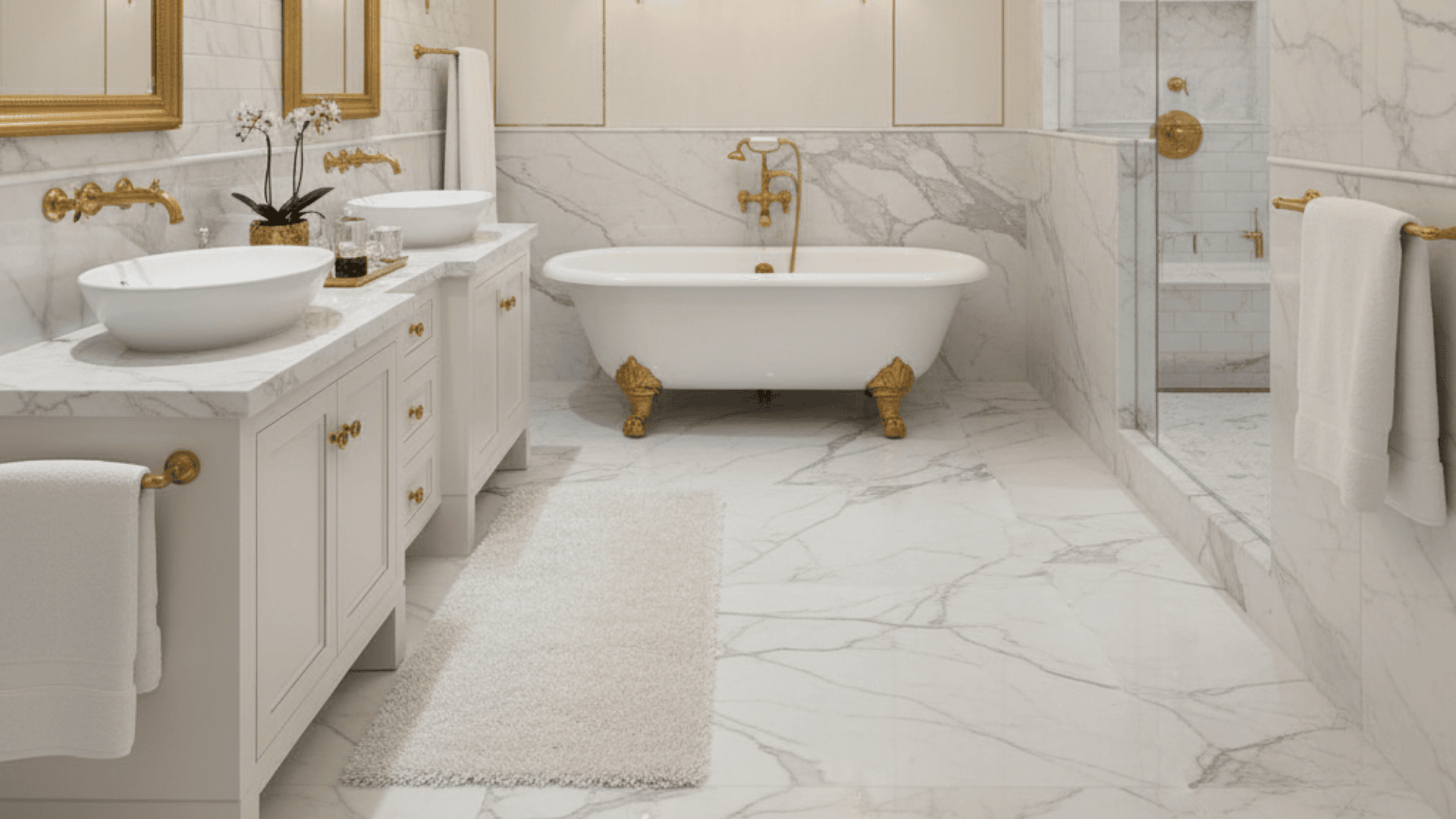
Marble brings luxury and refinement to any space. Each slab has unique veining and patterns that make your floor one of a kind. It’s cool to the touch, which feels great in warmer climates, but it does need regular care to keep it looking sharp.
- Price Range: $10–$50 per square foot
- Recommended For: Entryways, bathrooms, luxury kitchens, formal living areas
- Pros: Stunning natural beauty, increases home value, stays cool, lasts forever
- Cons: Expensive, stains easily (porous), scratches and chips, needs regular sealing
13. Rubber Flooring
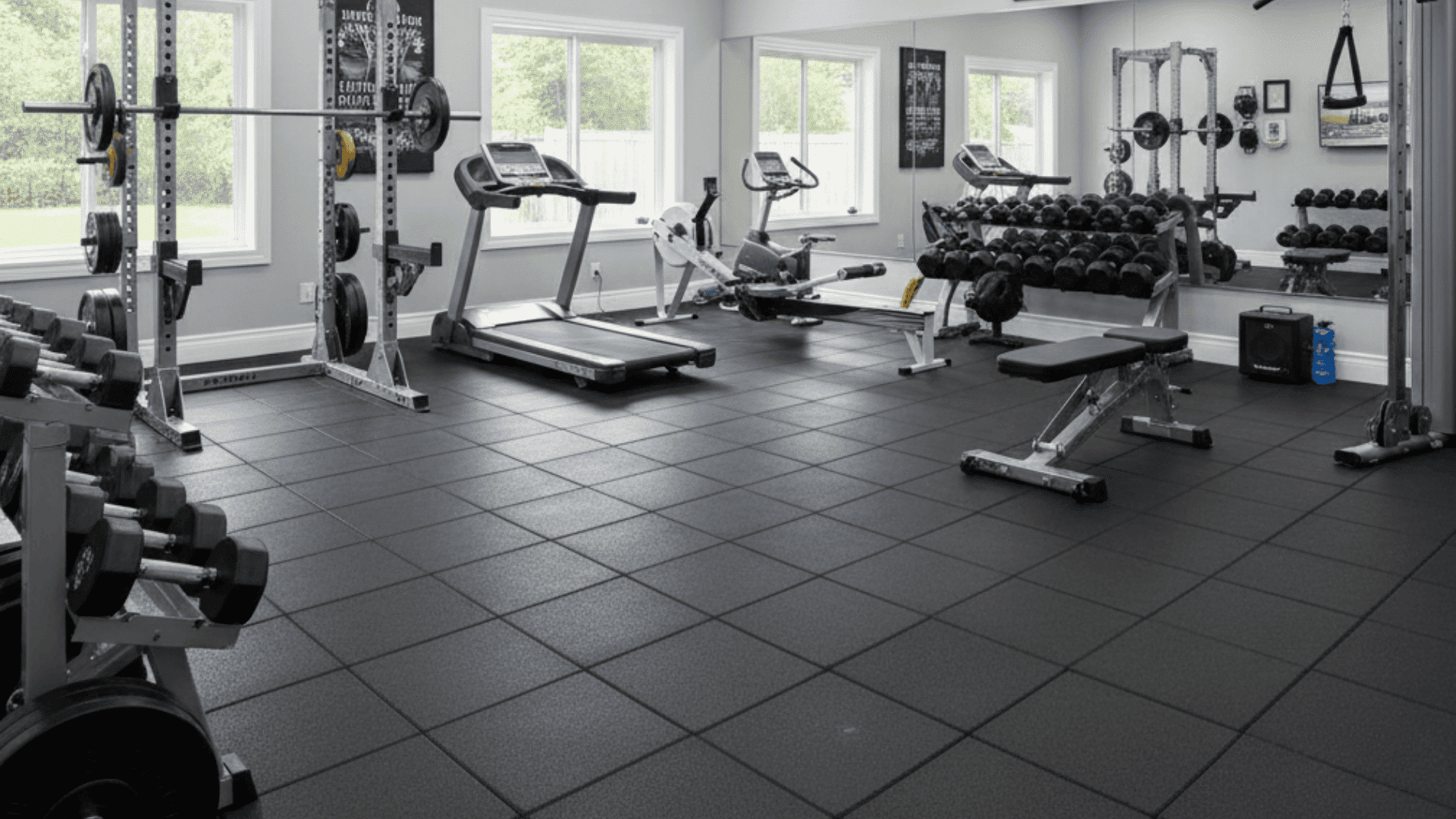
Rubber flooring is practical and surprisingly multi-purpose. It absorbs impact well, which makes it comfortable for standing or exercising.
- Price Range: $3–$10 per square foot
- Recommended For: Home gyms, playrooms, basements, laundry rooms, garages
- Pros: Shock-absorbent, slip-resistant, waterproof, easy to clean
- Cons: Limited style options, can have rubbery smell initially, not ideal for formal spaces
14. Terrazzo Flooring

Terrazzo mixes marble or granite chips with cement or resin for colorful, speckled patterns that last incredibly long, with modern versions offering endless color combinations for creative floor designs.
- Price Range: $15–$50 per square foot
- Recommended For: Entryways, kitchens, commercial spaces, modern or retro-styled homes
- Pros: Extremely durable, unique custom designs, low maintenance, hypoallergenic
- Cons: Expensive installation, cold and hard underfoot, requires professional polish over time
15. Epoxy Flooring

Epoxy is a tough liquid coating applied over concrete that creates a smooth, glossy surface popular in garages and basements, with customizable colors, patterns, and metallic finishes.
- Price Range: $3–$12 per square foot
- Recommended For: Garages, basements, workshops, modern kitchens, industrial-style homes
- Pros: Smooth finish, chemical and stain-resistant, easy to clean, customizable
- Cons: Slippery when wet, can yellow over time, professional installation recommended
16. Reclaimed Wood Flooring

Reclaimed wood comes from old barns, factories, or other buildings, giving each plank history and character. The weathered look adds warmth and uniqueness that new wood can’t match.
- Price Range: $8–$20 per square foot
- Recommended For: Living rooms, bedrooms, rustic or farmhouse-style homes
- Pros: Eco-friendly, unique character, durable (often old-growth wood), adds charm
- Cons: Limited availability, may need extra prep work, can be pricey
17. Vinyl Composition Tile (VCT)

VCT is made from vinyl, limestone, and plasticizers. You’ll see it in schools and offices because it handles heavy traffic without complaint. It comes in individual tiles, making repairs easy; just pop out damaged pieces and replace them.
- Price Range: $1–$5 per square foot
- Recommended For: Commercial spaces, basements, laundry rooms, high-traffic utility areas
- Pros: Very affordable, durable, easy to repair individual tiles, low maintenance
- Cons: Requires regular waxing, industrial look, not as stylish as other options
Each flooring type has strengths and trade-offs, so consider where you’re installing it and how much wear it’ll see, then pick the one that fits your lifestyle and budget.
How to Choose the Right Type of Flooring for Your Home?
Picking the right flooring means matching your lifestyle with what actually works. Consider the room’s function, budget, and upkeep before committing. Here’s what to consider:
- Room traffic matters: High-traffic areas need durable options like tile or vinyl; bedrooms can handle softer choices
- Watch moisture levels: Bathrooms and kitchens require waterproof flooring types tile, vinyl, or sealed concrete work best
- Budget realistically: Factor in installation costs, not just materials. DIY-friendly floors often save more than cheap options that need professionals
- Consider maintenance honestly: Some floors need regular sealing; others just need sweeping. Pick what fits your schedule
- Think resale value: Choose something that complements your space and appeals to future buyers
Picking the right flooring means matching your lifestyle with what actually works in your space. Consider the room’s function, budget, and upkeep before committing.
Installation and Care Tips
Choosing flooring isn’t just about looks; it’s about finding what fits your life. Consider how you use each space before committing.
- Wet areas like bathrooms and laundry rooms require waterproof choices such as tile, vinyl, or sealed concrete to prevent water damage and mold growth.
- Factor in both material and installation costs when budgeting; sometimes DIY-friendly options like vinyl planks or laminate save more money than cheaper materials that require professional installation.
- Match floors to your actual cleaning routine; some need regular sealing or refinishing, while others just need sweeping and occasional mopping.
- Pick something that complements your existing decor and feels right for your space, whether that’s modern, rustic, or somewhere in between.
- Consider what appeals to future buyers if you’re planning to sell eventually, since certain flooring types add more resale value than others.
The right floor works for you now and down the road. Compare different types of flooring carefully, and you’ll find something that truly fits your lifestyle.
Conclusion
Your floor choice affects your home for years. Don’t rush it, think about your lifestyle, budget, and how much upkeep you can handle. A busy family needs different flooring than someone living alone.
Check at least three options. Consider durability, water resistance, and cost. The best floor suits you now and in the future.
Ready to choose? Compare your top picks and think about how they’ll hold up in your space. I recommend choosing the one that best fits your needs, not just the one that looks good in photos.

